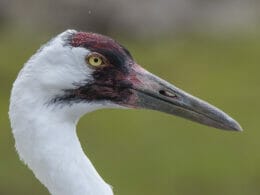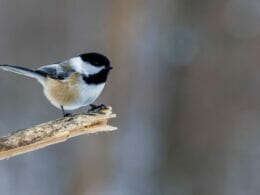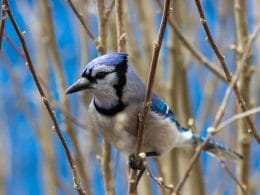Birds are fascinating creatures. Over time, they’ve learned to adapt to all climates and weather conditions in different parts of the globe. Did you know that there are some birds that can swim and fly?
Did you also know that birds are descendants of a group of dinosaurs called theropods? Theropods are characterized by hollow bones, two legs, and three-toed limbs, much like a bird.
These features make birds a versatile species. Not only do they fly, but many types of birds can also swim with great ease.
Here are 15 extraordinary birds that can swim and fly.
15 Amazing Birds That Can Swim and Fly
Birds are some of the most multiskilled creatures on earth. They’ve adapted extremely well to survive against harsh conditions.
Some of the birds on our list can only enjoy a relaxing swim. Others can stay underwater in search of food and other resources.
1. American Dipper
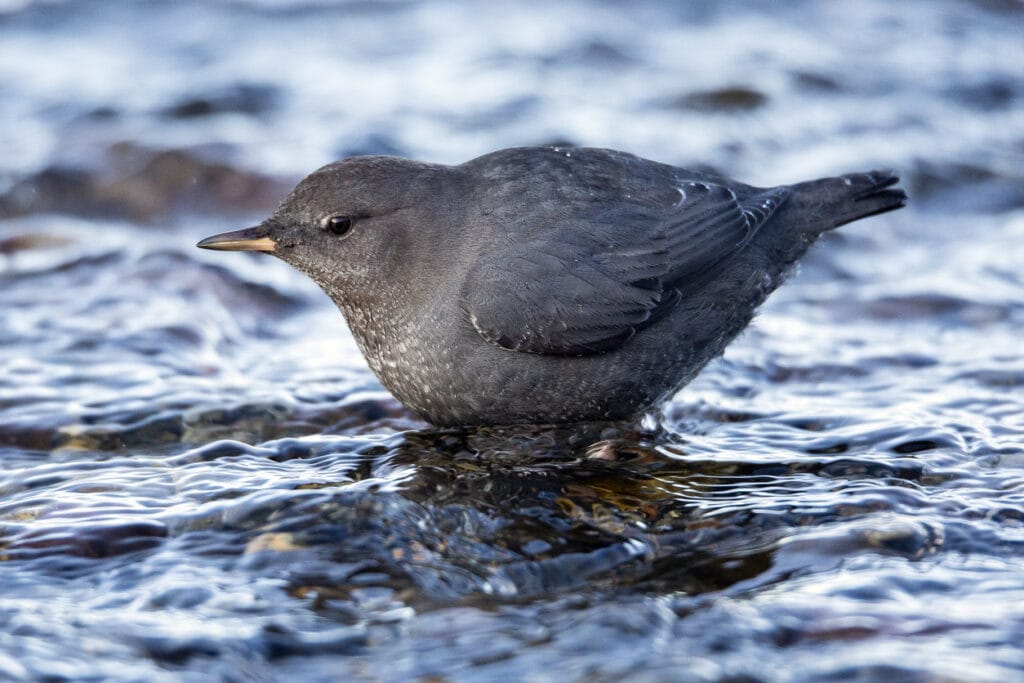
The American Dipper prefers setting up its nests in high mountains near bodies of fresh water. It wades in the shallow banks looking for food.
Author Note: The Dipper is also a skilled swimmer. It’s the only aquatic songbird in all of North America. This small bird glides in the water searching for prey. Its diet includes fish eggs, aquatic insects, and other small creatures.
When it comes to flying, the dipper can make short flights. They’re good at catching insects mid-air. Yet, they’re not strong flyers.
2. Bald Eagles

Not many people know that bald eagles are good swimmers. They glide down over the surface of the water to snatch up fish without getting their feathers wet.
So, what happens when the hunt doesn’t go as planned? The eagle will end up in the water. Sometimes, it’ll miss the fish altogether and have to swim to shore. Other times, the eagles will grip onto the fish while in the water and take it along for a swim until it reaches the shore.
3. Coots
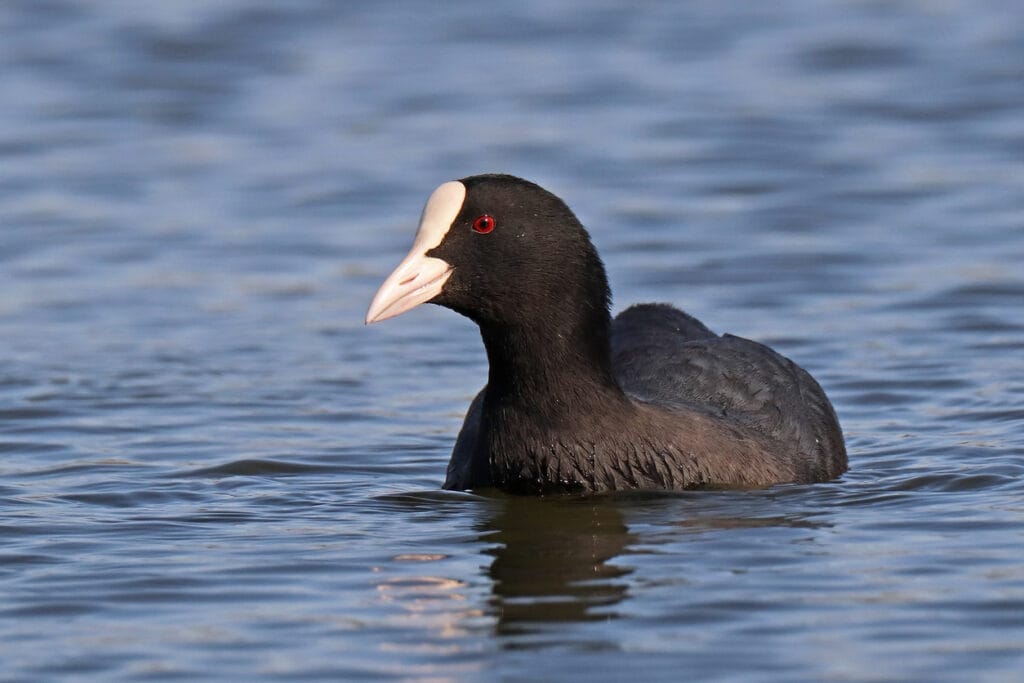
Coots are similar to ducks or bull sprigs in appearance, but they’re slightly smaller. They have dark grey plumage that appears black from afar, and they’re identified by their chicken-like white beaks.
Author Note: They’re found in freshwater environments and feed mainly on small vertebrates. However, their preferred meal consists of aquatic vegetation.
Coots are pretty clumsy when it comes to flying. They flap their wings haphazardly across the water until they’re finally airborne.
4. Cormorants and Anhinga
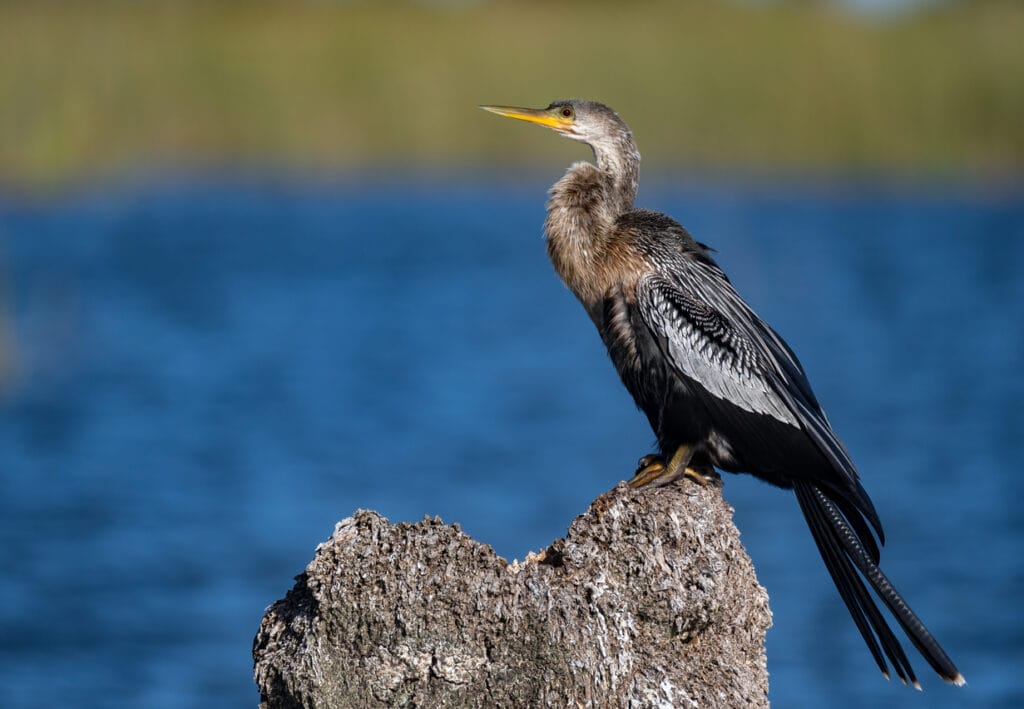
Cormorants are big, dark-colored birds that like to perch on rocks along the coast. They usually like to sit with their wings spread out, ready to dive in and catch their prey. Their diet consists of fish, eels, and water snakes.
Their flying abilities are just as strong. They’re good at gliding low over the water, as well as soaring high in air currents.
5. Ducks

Ducks spend a large portion of their time lazily floating around and looking for food. When they finally come out of the water, it’s usually to sleep, lay their eggs, or waddle around.
Because their wings are proportionally small, ducks can’t soar like hawks. They have to flap their wings quickly for their heavy bodies to become airborne. Once they’re in the air, they can fly at over 50 miles an hour!
They’re one of the few aquatic birds that can be found both in the wild or kept as livestock animals. The typical diet of ducks consists of pondweed, water snails, and small amphibians.
6. Geese
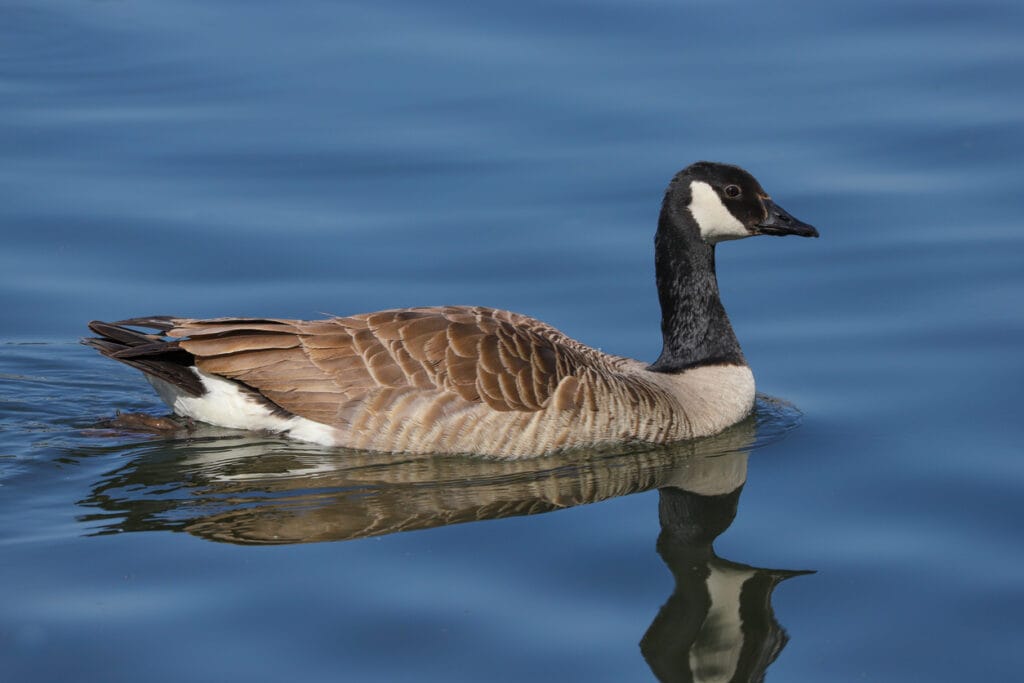
Geese are close relatives to ducks and swans. Just like their aquatic bird cousins, they can be found in freshwater ponds and lakes. However, some species can handle the hardships of saltwater.
Geese use their long necks for grazing for vegetation underwater. They also sometimes dive underwater to escape danger.
Despite being heavy birds, geese can fly over 30 miles per hour. They use forceful wing beats instead of gliding in the air like eagles.
7. Great Horned Owl

The Great Horned Owl is a raptor similar to the bald eagle. It‘s known for its ferocious glare and tactical hunting ability.
Yet, they’re also pretty good swimmers, even though they rarely do it by choice. The reason is that their feathers get waterlogged and can’t fly out of the water. Plus, their talons are large and don’t do a good job of moving them through the water.
It is not common to see a Great Horned using the crawl stroke in the water. This usually happens because of two reasons. Either it’s running away from a predator, or it’s hunting prey in the water and accidentally gets wet.
8. Grebes

Grebes are more comfortable being in freshwater than on land. If you do spot a Grebe in an ocean or marine environment, it’s usually during the winter season or for migration.
One of the most interesting features of Grebes is that they lay their eggs in the water. They build floating nests made out of various types of vegetation. Then, as soon as they hatch, Grebe babies can swim straight away!
Author Note: Grebes aren’t powerful flyers. They can only glide in short bursts because of their narrow wings.
9. Loons
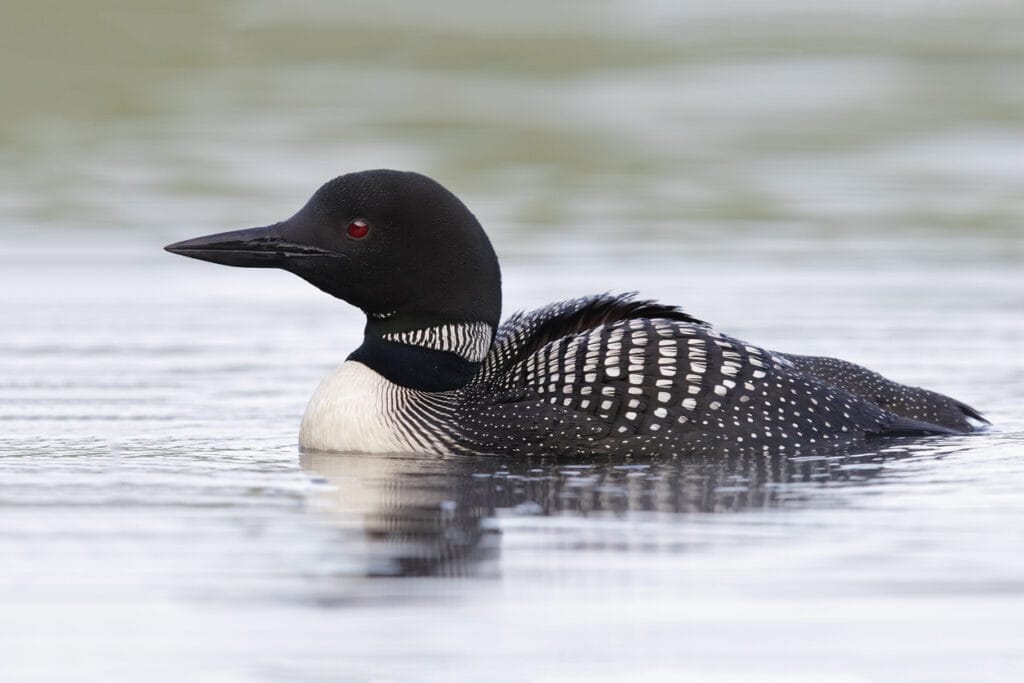
Loons are known for their early morning calls as they float across lakes. Their physical appearance is similar to a duck’s. Yet, they belong to a completely different taxonomic family.
These social birds prefer freshwater bodies of water where they move quite gracefully. Their solid bones make them more adept at diving.
Not only that, but they’re also pretty agile in the air as well. They can cover thousands of miles in a straight flight.
10. Murres

Murres are swift swimmers. They use their wings to maneuver themselves and glide effortlessly underwater. This conserves energy and allows them to move without being detected.
Top Tip: These water birds have thick bills to help them catch their prey. Their diet mainly consists of small crustaceans, shrimp, and fish.
These small-sized birds aren’t strong flyers. However, they’re pretty fast, especially in direct flight.
11. Pelicans

Pelicans use their pouches to scoop up fish as they’re swimming through the water. They have an uncanny ability to drain the water before swallowing their prey whole.
One of the most impressive features of pelicans is that they can hover in the air for up to 24 hours. While they’re not good at sustained flapping, they can cover hundreds of miles. Pelicans are good at using thermals to fly to higher altitudes.
12. Petrels

Petrels are amazing swimmers that commonly inhabit warm, coastal regions. They can soar into the crest of one wave and come out the other side. This unique ability allows them to prey on fish, shrimp, and squid.
Author Note: These large birds are fast flyers. Petrels are able to gain momentum by quickly flapping their wings.
13. Puffins
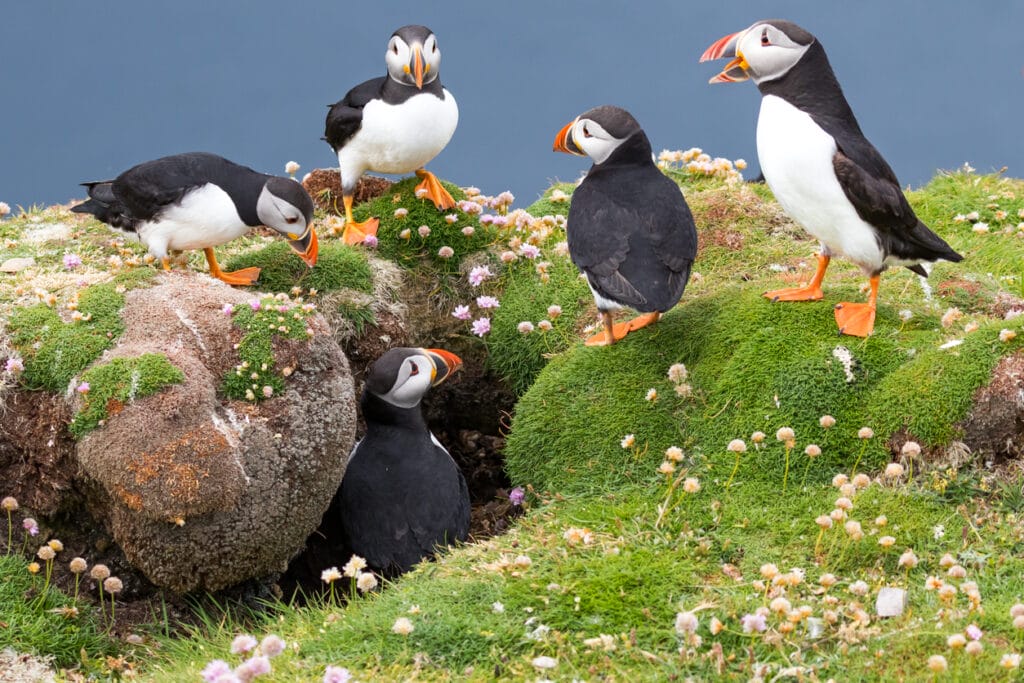
Puffins are expert aquatic birds. They’re distant cousins of penguins and share similar coloration.
The most significant difference between them, however, is that puffins can fly. Despite their small size, Puffins can beat their wings over 400 times per minute!
These social birds prefer the cooler climates of the Northern Hemisphere, like Maine and Alaska. They’re usually fopretty,und in large colonies over cliffs and in crevices.
14. Gulls

Gulls get their food primarily from the sea. They glide over the water, then dive down in one swift motion to catch prey.
Even though most of a gull’s dives are shallow, it can handle diving up to 180 feet straight down. Another of their unique traits is that they can stay underwater for a maximum of 15 minutes. Few aquatic birds can last that long underwater, except for maybe penguins.
The average altitude a gull can reach while flying is 50 feet. They’re pretty good at riding thermals. It helps them conserve energy as they’re searching for food.
15. Swans
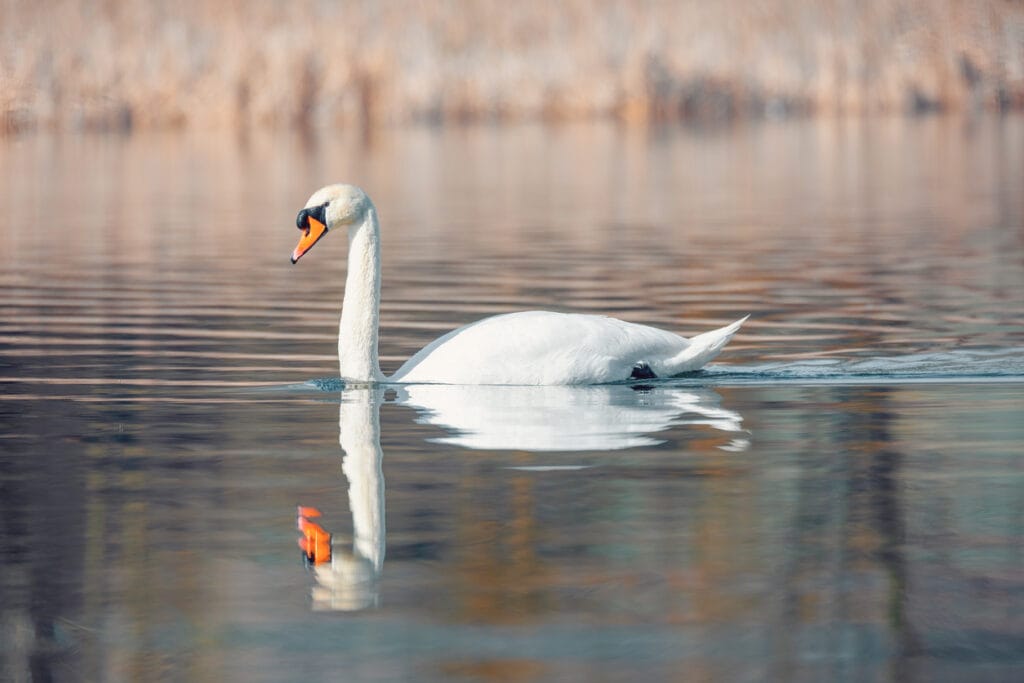
Swans are such regal creatures. These majestic birds are excellent divers when they need to be. They swim quite fast, reaching speeds of over one mile per hour.
Author Note: Their diet consists of small frogs, worms, and fish. In addition, they also graze on aquatic vegetation with the help of their long necks.
You might be surprised to know that swans can migrate thousands of miles. They’re powerful fliers, even though they’re large-bodied.
The Characteristics of Birds that Can Swim and Fly
Water birds are comfortable both on land and in the water. While they may differ in appearance, they share several characteristics.
Webbed Feet
Aquatic birds, such as ducks and pelicans, have webbed feet that act as propellers. They help guide them when they’re floating or swimming underwater.
Round Bills
Round, flat bills are better suited for eating aquatic plants and vegetation. Moreover, they make it easy for water birds, such as swans and geese, to pick up small invertebrates.
Sharp Beaks
Aquatic birds with long, sharp beaks are equipped to catch fish, shrimp, and other invertebrates. These sharp beaks are typically found on diving birds, such as loons and cormorants.
Short Wings
For water birds, it’s convenient for their wings to be stubby and powerful. Short wings allow water birds to move through the water with as little friction as possible. Their muscular build helps them maneuver through the water swiftly.
The Takeaway
Birds have many interesting characteristics, from their strong muscles to hollow bones, these creatures are truly unique and there’s a lot for us to study about them.
One of their most fascinating characteristics is their ability to adapt. Out of the tens of thousands of bird species worldwide, many can be found both in the air and in the water, giving solid proof of birds’ dynamic nature.
Fly high friends!
FAQ
One bird that can both fly and swim is a duck. Ducks are well adapted to both air and water environments, and they use their wings to both fly and swim. Cormorants, Seagulls and Pelicans are also very capable swimmers.
Ducks are birds that use their wings to swim. They paddle their wings through the water to propel themselves forward and steer.
Ducks are considered good swimmers, as they are well adapted to both air and water environments. Other birds that are good swimmers include geese, swans, and loons
The fastest swimming bird is the Penguin. While ducks are capable swimmers, penguins are even better swimmers, able to reach speeds of up to 15 miles per hour in the water.








